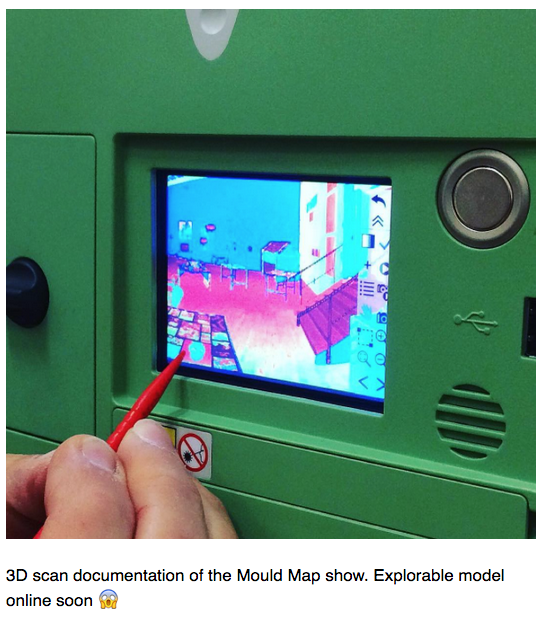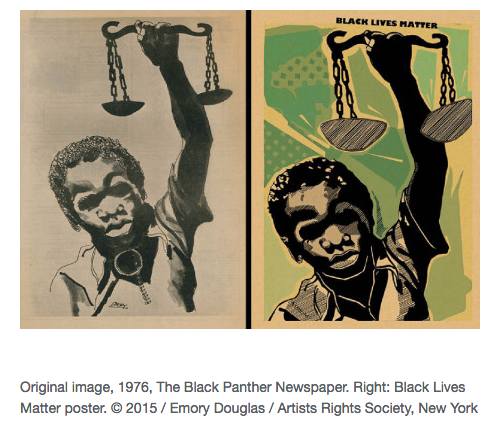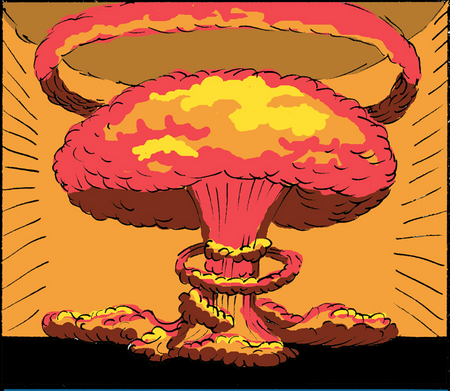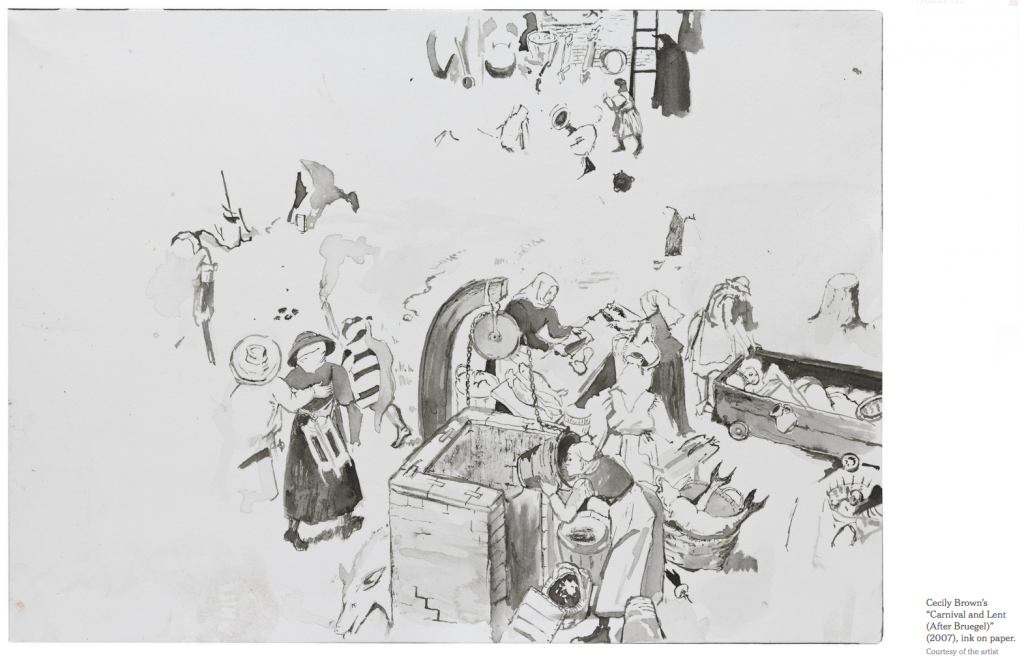Aaron here today with Mould Map 6; Leela Corman; Comics from Spain; Colette Gaiter on the work of Emory Douglas; More Pepe (Sorry, Pepe); Cecily Brown; (Notes For/Towards) Some Capsule Reviews
—————————————————————————————————
Group Exhibition & Events Series
Bonington Gallery, Nottingham
17th September to 21st October 2016In a break with the publication format of earlier editions, Mould Map 6 will take place as an exhibition / walk-in magazine running over 5 weeks and including talks, screenings, performances and open workshops. Set against the background hum of sci-fi imaginaries common to all Mould Map projects, TERRAFORMERS brings together over 50 practitioners whose work encompasses various approaches to world making, alongside historical visualisations of possible futures and their role in shaping the present.
—————————————————————————————————
Life is an ambush. My two birth stories.
A Leela Corman comic.
—————————————————————————————————
Spanish Fever Panel Discussion from SPX now on Youtube
Cómics, tebeos, and novelas gráficas have been making waves on the European comics scene for decades. SPX, in partnership with the Spanish Cultural Center, proudly presents some of the most exciting Spanish talent in the comics scene! Bienvenido a David Rubín, Javier Olivares, Ana Galvañ, José Domingo, and Santiago García. Moderated by cartoonist and teacher Matt Madden.
—————————————————————————————————
The 164th meeting of the NY Comics & Picture-story Symposium will be held on Tuesday, Oct. 18, 2016 at 7pm at Parsons School of Design, The New School, 2 West 13th Street, in the Bark Room (off the lobby). Free and open to the public.
Colette Gaiter on “Emory Douglas: 50 years of Revolutionary Art”
Colette Gaiter will talk about former Black Panther Party Minister of Culture, artist, designer and illustrator Emory Douglas’s work on The Black Panther newspaper in the 1960s and 70s. His subversive and proactive political cartoons, collages and drawings visualized the Black Power movement and galvanized activism that persists into the twenty-first century. He currently travels globally to give talks about his previous work and collaborates with indigenous activists in Australia, New Zealand, Mexico—any place where people use art for liberation from injustice and oppression.
—————————————————————————————————
Pepe Pepe Pepe
- Heer/Pepe
The great Jeet Heer has a piece about Pepe the Frog at the New Republic:
When the alt-right kidnapped Pepe the Frog, they weren’t just seizing control of Matt Furie’s character, but also defiling an entire artistic tradition of using animal allegories to comment on racism. They were returning cartoon animals to the crudity of blackface creations like Flip the Frog and denying the artistic depth found in works ranging from Krazy Kat to the Muppets to Art Spiegelman’s graphic novel Maus (where the cats are Nazis and the mice Jews). Pepe the Frog, as perverted by its captors, is a kind of inverted Kermit: a frog drained of any humanity.
- Furie/Pepe
Matt Furie: political cartoonist?
—————————————————————————————————
Cecily Brown at the Drawing Center through December 18
For years, Ms. Brown has taken the images that stay with her and drawn them, not just once but again and again. Sometimes these images are the overwhelming examples of her predecessors, like the masterly 18th-century debauchery of William Hogarth’s painting “Strolling Actresses Dressing in a Barn” or the postmedieval, religiously-tinged excess of Pieter Bruegel the Elder’s “Fight Between Carnival and Lent.” But she also plucks shimmering fragments out of the contaminated tide of sexual imagery that is a fact of modern life — and whether it’s the ecstatically endless variation of the unchanging act itself or the compulsive repetition of pornography, sex seems especially apropos.
—————————————————————————————————
Brief, Ephemeral Capsule Reviews
Open Country #1, Michael DeForge, 2011, self-published
According to Wikipedia: DeForge self-published Open Country #1 in May 2011 and issue #2 in fall 2011. Originally planned as a five-part series, DeForge abandoned it “midway through, destroyed all the artwork for and then threw away all the unsold copies”. We take great comforts in these assured and abandoned works.
Late Era Clash #24 & #27, Mike Taylor, 2011 & 2015, Pegacorn Press
Fin de siècle Bushwick etc apt-dwelling and loneliness, questionable behavior, the lure of the internet & a workbook about death, respectively.
Les nouvelles béguines, Julie Delporte, 2015, self-published
Paint and colored pencil and some tape collage. Placement of tape is extremely important. Use of tape in one’s art practice in general. Use of white space on paper – Negative Space etc etc.
Hands: An Anti-story, Kimball Anderson, 2015, InkBrick
Anderson as a body artist, transcription of hand gestures, process of talking to oneself, balance of pages panels and worded space rubbed out and smudged, first issue in a series.
I Never Promised You a Rose Garden Part 1: My Own Private Portland & Part 2: Ken Death is Death, Annie Murphy, 2015 & 2016, self-published
Murphy writing about ghosts. River Phoenix, balance of / cohesion of ruled notebook paper and space for image, lab books and writing out text, pacing it out. Portland as a haunted space. Gus van Sant/My Own Private Idaho/River Phoenix. Where it exists in Murphy’s memories. Part 2 and white supremacy in the Pacific Northwest region of the U.S. + Portland history 20 years on. A note on the printing aesthetic: photocopied inkwash.
A note on printing aesthetic in general — OC: printed-out greyscale or Riso, maybe? LEC: Riso, screenprinted cover; LNB: Laser-printed?; H: good photocopier probably; INPYARG: see above. Also: wondering about the size of these print runs?




